
“Conciliatory laughter is heard as the echo of an escape from power; the wrong kind overcomes
fear by capitulating to the forces which are to be feared.”
Adorno
I have used terms like radical pedagogy, or aesthetic resistance (and they aren’t mine, I’ve just overheard them or read them, and find them worth using).
Today, not just culturally, but especially culturally, the authoritarian and fascist sensibility is channeled into categories of sentimental applause, or binary divisions of like/not-like, and more subtly, it assists an already existing condition of thought on the left, or in all opposition, for cynicism and snideness. There is almost a spacial metaphor here: the outsider sniping from beyond the walls. I suspect if one were to examine studio or network TV, one would find subtle indicators of this, and encouragements, and narratives in which this metaphorical space is expressed.
The “sniper” as a military metaphor has already found a degree of traction in popular culture, actually. But it goes well beyond that.
One of the intended results of hyper-branding, and advanced marketing (including the state dept PR division) is the orchestrating of reaction — the pre-arranged response, and this includes criticism. Part of this is simply the mirroring effect. Establish a one dimensional master narrative, the answer appears as its mirror opposite. There is more, though, that has to do with space — both figurative and literal. It is also the logic at work, the embedded tropes, and pseudo truths of the system. One form of this is the reliance on jargon from the left. And I am probably as guilty as anyone of this. The colonizing of intellectual discourse by the academy along with the trend in capitalism toward specialization, results in an increasingly hermetic private language for criticism.
The U.S. embraced sociology as soon as it arrived — it is the perfect science for a marketing consciousness.
In culture, the left is as distrustful of Dionysian emotion as the far right, of anything seen to be too ineffable or mysterious, because of a hard insistence on *scientific* Marxism. In the 60s, thinkers such as Norman O.Brown, and the Frankfurt school, as well as those even marginally related to the school, Benjamin and Bloch as well as radical psychoanalysts such as R.D.Laing, or second generation Reichians, were still part of intellectual discourse. Auto didacts still were seen as acceptable, by and large, participants in public intellectual dialogue. All of those writers and thinkers embraced culture, and art, as constituent to social change. Utopian constructs were less ridiculed.
A number of factors began to erode the idea of the importance of culture. Norman O.Brown was a classics professor firstly, and his reliance on works of antiquity were a casualty of some of the response (legitimate) to what was seen as white patriarchal supremicism. The problem of course was that Dante is not the enemy. The custodians of empire — the elitist class of white privilege had created a canon, used (!!) to reinforce a new Hegelian pseudo scientific anthropology (coded versions of what were really racist eugenics, so if Madison Grant and Otto Reche were too vulgar and obvious, a new set of codes were going to be needed)were in fact discovering structural variations on the same racist and misogynist beliefs. Unfortunately much writing on arts and culture got thrown out along with the obvious and too crude fascist thinkers.
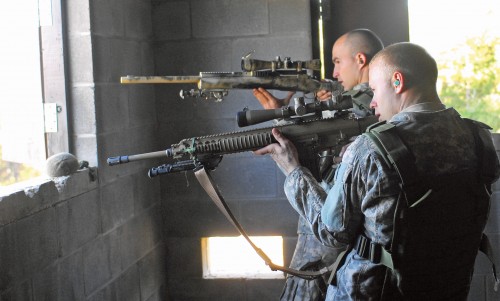
Now, not to overstate things here. This was the left. The state remained unwaveringly supportive of racist legislation and the furthering of class domination. A side bar worth remembering is the role of intelligence testing from WW1 on through to today, really. As Anna Stubblefield wrote:
“… in the early twentieth century, the concept of feeblemindedness came to operate as an umbrella concept that linked off-white ethnicity, poverty, and gendered conceptions of lack of moral character together and that feeblemindedness thus understood functioned as the signifier of tainted whiteness.”
The practices of forced sterilization, anti miscenegenation laws, definitions of insanity, all persisted right through WW2, and it was at that point that new revisionist version of these same principles were implemented. (A quick google of Mankind Quarterly is fairly illuminating, actually).
However, to return to culture — the master narrative had adjusted its presentation, and as the 60s unfolded, and Viet Nam, and after, as the state regrouped around the realization that marketing was the key, and as new financing poured into the State Department budget to be used for propaganda (under cover in a sense for the *fight against communism*) there were clear structural changes in public discourse.
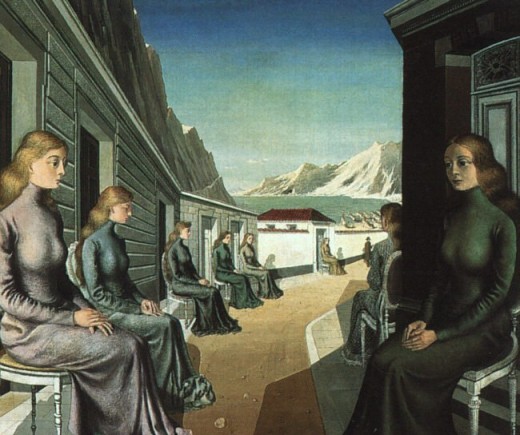
Underlying all this is a persistent misconception about art. And it is evident even in Guy Debord, writing about a review of Godard…
“CHATEL THINKS THAT if a portion of the population recognizes itself in a film, it will be able to “look at itself, admire itself, criticize itself or reject itself — in any case, to use the images that pass on the screen for its own needs.” Let us first of all note that there is a certain mystery in this notion of using such a flow of images to satisfy authentic needs. Just how they are to be used is not clear. It would seem to be necessary first to specify which needs are in question in order to determine whether those images can really serve as means to satisfy them. Furthermore, everything we know about the mechanism of the spectacle, even at the simplest cinematic level, absolutely contradicts this idyllic vision of people equally free to admire or criticize themselves by recognizing themselves in the characters of a film. But most fundamentally, it is impossible to accept this division of labor between uncontrollable specialists presenting a vision of people’s lives to them and audiences having to recognize themselves more or less clearly in those images. Attaining a certain accuracy in describing people’s behavior is not necessarily positive. Even if Godard presents people with an image of themselves in which they can undeniably recognize themselves more than in the films of Fernandel, he nevertheless presents them with a false image in which they recognize themselves falsely.”

Raghu Rai, India
The problem is an assumption about identification. And by extension, about *communication*. Art is not about either of these things.
and later…..” On the contrary, the revolutionary movement must accord a central place to criticism of culture and everyday life.”
There are a host of issues here. Firstly, the dynamic of spectator and spectacle is reproducing a capitalist dynamic….at least partly. The problem with Debord (and not just Debord) is generalizing exactly what the Spectacle is. You cant have it both ways in a sense. Yes culture is critically important for a revolutionary consciousness. The question though, is, in what ways does the individual engage the artwork, engage with culture. What does it mean to be a spectactor?
From Timothy Clark, Christopher Gray, Donald Nicholson-Smith & Charles Radcliffe, 1967.
“Cop art, cop artists. The whole lot moves towards a fusion of forms in a total environmental spectacle complete with various forms of prefabricated and controlled participation. It is just an integral part of the all-encompassing reforming of modern capitalism. Behind it looms the whole weight of a society trying to obscure the increasingly transparent exclusion and repression it imposes on everyone, to restore some semblance of colour, variety and meaning to leisure and work, to “organise participation in something in which it is impossible to participate.” As such, these artists should be treated the same way as police-state psychiatrists, cyberneticians, and contemporary architects. Small wonder their avant-garde cultural ‘events’ are so heavily policed.”
and
“Purely contemplative nihilism is no more the special province of artists than is modern reformism. In fact, neo-Dada lags way behind the misadventures of the commodity-economy itself — every aspect of life today could pass as its own parody. The Naked Lunch pales before any of the mass media. Its real significance is quite different. For pop art is not only, as Black Mask remarks, the apotheosis of capitalist reality: it is the last ditch attempt to shore up the decomposition of the spectacle. Decay has reached the point where it must be made attractive in its own right. If nothing has any value, then nothing must become valuable. The bluff may be desperate but no one dares to call it, here or anywhere else. And so Marvel comics become as venerable as Pope. The function of neo-Dada is to provide an aesthetic and ideological alibi for the coming period, to which modern commerce is condemned, of increasingly pointless and self-destructive products: the consumption/anti-consumption of the life/anti-life. Galbraith’s subordination of economic to aesthetic goals is perfectly summed up in the Mystic Box. “Throw switch ‘on.’ Box rumbles and quivers. Lid slowly rises, a hand emerges and pushes switch off. Hand disappears as lid slams shut. Does absolutely nothing but switch off!” The nihilism of modern art is merely an introduction to the art of modern nihilism.”
That these are writings from almost fifty years ago is suggestive of several things. The most obvious is the incredible rise of marketing hegemony, and the vast expanse, now, of electronic media, 99% of which is corporate owned. What were only structurally embedded tendencies in 1960 have become overt and powerful forms of the new propagandized experience. Perhaps the first casualty of this enclosing of experience has been language and speech.
But before getting to that, I want to question a prevailing assumption that lies behind almost all of this. And that is the nature of cultural experience. Or, the manner in which the individual spectator experiences an artwork. The acceptance of “identification” as the primary aesthetic reading of any narrative, but especially a *fictional* one — and this includes film, TV, theatre, the novel, poetry, and painting … and I suppose dance and possibly even some music, almost goes unquestioned.
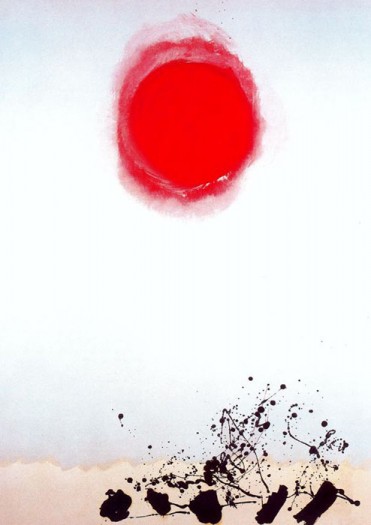
I want to dig up a couple quotes from an earlier dialogue I had with Guy Zimmerman, about theatre and the tragic.
First Guy…
“…But the point is that this temporal inversion becomes more and more the explicit subject of theater as the modern era unfolds, and the reason for this has to do with the growing “spatialization” of time (to use Deleuze’s phrase), where the subtle interplay of memory and presence is reduced to a strictly linear flow of mechanical time.”
and then something I wrote…
For our purposes, for the modern theatre, I think what is relevant here is to think about what that Dionysian energy was, what was its form.
It was a domesticating and secularizing of the daimonic. This, in effect, was an assault on the paradoxes and mysteries of the Tragic sensibility. Benjamin said the death of tragedy was a death or exhaustion of possibilities. But here is the fascinating point in all this; both Nietszche and Benjamin saw tragedy as intimately connected to sacrifice. There was a double meaning to sacrifice though. It was both atonement to the Gods (of myth) and as an act that gathers together the community – (which is where Rene Girard enters the conversation).
I have always felt that the best theatre is that which somehow exhausts the excuses for conventional senses of identity and value, or, to put it another way, for bourgeois demarcations of self and society. Whether Beckett or Pinter or Bernhard – or Kane for that matter – the play is a deed, an active performative act of destruction.
The acceptance of this notion of identification eliminates the more complex questioning of what our experience of ritually presented narrative does. Identification means a fixed idea of self — which must be insisted on with strict discipline.
Allow me to quote Molly Klein here, when she interviewed me (and while it is about my work, it applies to the questions being raised).
“Right off the bat I’ll say my hunch is that what your works produce is an alternative to the spectacle as Debord described but that has some points in common, as if in some kind of similar but inverted relation to quotidian reality, but whereas the spectacle seeks to enclose, replace, control and exploit quotidian reality, the drama as you practise it enters into a relation which informs, sustains, assists in the enrichment and reproduction of reality. It seems to me the reassertion of spoken language – which is impoverished and dominated by images in the spectacle – is a major aspect of the construction of a literal space.”

All of this is to point up the problem I see in a critical response to mass culture in leftist writing. So total is the script of the master narrative, so strong is this mediated corporate colonized world, that even critical responses take the shape of the ruins and destruction to which they are witness. “Identification” means, now, identification with domination. And some strange slippage has occurred whereby the left’s rage at the vast architecture of death and sadism is displaced — or rather, even if not displaced, it is articulated in a mechanism of self denial, in a setting where real life and artwork are interchangeable.
I’ve noticed in much critical discussion of media, a liberal demand for reform — and the primacy for reform in representation even before that reform in the real world.
“If the structure of narrative, of the instrumental reason, causes the domination of mimesis, if mimesis is repressed, dominated and tamed by instrumental reason, then, it also, ironically, survives through the existence of the myth of enlightenment itself. Thus mimesis’s “aggression” is purely bound up in its efforts for survival.”
Amresh Sinha,
on Adorno and Mimesis
There is a point for both Benjamin and Adorno, where art (and mimesis) connect with an archaic heritage, with the persistence of mimesis as expression of no-thing. Nothing except itself.
Sinha again…
“The dialectic of mimesis, Adorno claims, is absolutely “intrinsic” to art, a proposition mostly misunderstood by the “naïveté” of modern aesthetic thought. For it fails to appreciate the progressive disenchantment of the world in the work of art as a means for securing, however through technology, the life of magical heritage of art. The dialectic of mimesis and rationality reveals the compatible but irreconcilable tendency of one to the other. Art’s mimetic character is revealed in its disenchantment from and secularization of magic from the archaic period. It thus conveys the rational side of art, as well as its refusal to allow the domination of rationality to turn it into a technological perfect being. In art the resistance is felt in both directions as nothing but the mute suffering of its expression.”
The questions raised by Situationists could not be resolved by them because of this basic confusion, this simplification of mimetic experience. The truth of SI , and of Artaud, both nonetheless ended in a kind of nihilistic frustration. For the larger form of domination, that of the illusory rationality of scientism, masking a deep irrationality, a self destructive repression, and sadism, presented on the stage of world conquest, a conquest by white patriarchal power, had now been sold to the public as Nature. Aesthetic resistance cannot simply treat mimetic expression, mimetic re-narration, as if it were engaging with a shipping container of dead mackeral, whose history extended no further back than six days.
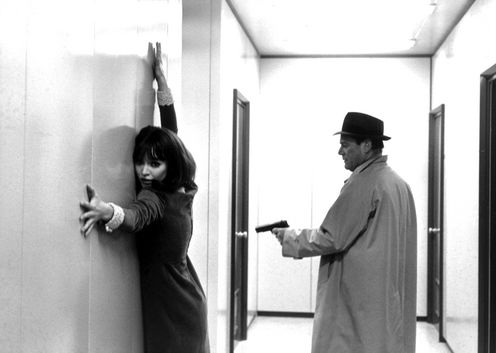
Alphaville, 1965, Dr. Jean Luc Godard
“Works of art acquire their life only when they renounce their likeness to the human”.
Adorno
There is in that quote something echoed by Zuidervaart, when he says “modern art is virtually an identification with the aggressor…”. It is this most difficult, I think, of all Adorno’s topics, that is also the most crucial to grasping the false negation of the sensual in art.
As R.D. Laing said, we tend, especially as children, to torment ourselves as a defense mechanism, to identify with the reified world, as a strategy of reifying ourselves before the system does. Pre-emptive self alienation — is reflected in the subsequent denial of a deeper (and Dionysian, or sensual) mimetic re-narrating of the artwork. It is in culture that political resistance allows itself to punish the other (which it represses in social life, as part of a moral and admirable project of resistance). A hatred of the non-administered artwork emerges as a prevailing ethos on the left. The artwork that does not cleave to certain notions of class and worse, lodges itself as something to be approached without identification, and without actionable lessons of revolt, or that does not suggest clear political readings — will be recoiled from. One never even gets to the place where form can be discussed. It is this critical approach — spectacle and deserving suplicant (or spectacle and undeserving revolutionary) that is actually the fall out from a solidifying of dynamics between workers and management. The left distrusts management…and confuses artworks with a managerial class.
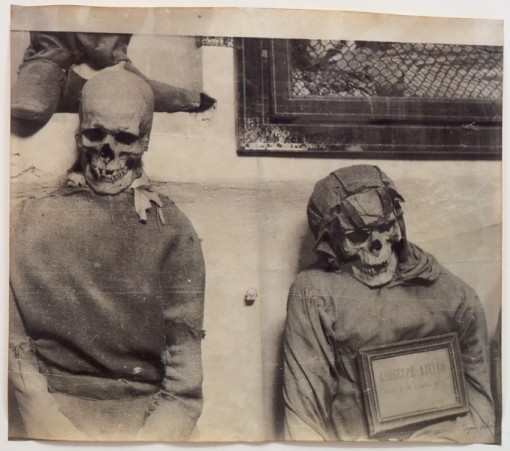
Works by John Sayles, or Mike Leigh, or painters such as Rivera and the Mexican muralists, or even Picasso, are almost uniformally endorsed on the left. In fact endorsed with an almost shocking uniformity. This is not to discount Rivera or Orozco as valuable artists, though I think they remain highly over-valued right now, but to point to a predictable set of taste standards on the left. If the liberal (especially educated and affluent and white) gravitated in their own private scripted story line to the adjusted paternalism of white man Redford, or Aaron Sorkin, then left found their comfort zone in directors like Sayles.
This is a complex topic, and it also raises an interesting question about violence. There are several competing versions of explanation for the hyper violence of cultural product today. And I fear there is a subtle secondary question that too often is ignored. I am guilty of this, and I think most who write about cultural representations of violence are. There is no question that daily life is now saturated with images and sounds of violence. However, there are also a host of issues not yet touched upon.
This is, of course, not just the left. Teaching aesthetics is almost not done, and where it is still a part of the curriculum, its mostly just perfunctory ‘art appreciation’. The result is that by the time students get to college, those that do, there is a total absence of cultural background. The University lit crit field was probably both reaction and creation. In any event, the destruction of public education took a form in which the humanities were the first place the plug got pulled.
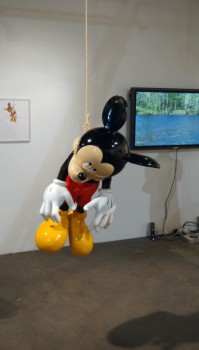 If, one some level, narrative always reflects, partly, our own intellectual and emotional development, then one dimension of creative expression is a repetition compulsion as search-for-lost site of trauma in childhood.
If, one some level, narrative always reflects, partly, our own intellectual and emotional development, then one dimension of creative expression is a repetition compulsion as search-for-lost site of trauma in childhood.
The reproduction of this desire *for* that which has been forgotten. The truth is that, it is a search for that which may not exist, or have happened. It doesn’t matter.
In one of Adorno’s denser paragraphs lies a partial answer:
Ultimately, aesthetic comportment is to be defined as the capacity to shudder, as if goose bumps
were the first aesthetic image… . Consciousness without shudder is reified consciousness. That
shudder in which subjectivity stirs without yet being subjectivity is the act of being touched by
the other. Aesthetic comportment assimilates itself to that other rather than subordinating it.
Such a constitutive relation of the subject to objectivity in aesthetic comportment joins eros and
knowledge.

Richard Nixon, at home reading newspapers.
Actual contact with Nature, when children, yields the first sense of awe and wonder — both positive and negative — that human’s experience. Those childhood traces, all that remain often from a life lived under the boot heel of capitalist domination, of an increasingly administered and bureaucratic life, are criminalized as illicit, unconsciously. The 21st century individual, in the West, lives within an enclosure of growing laws, regulations and punishments. I think often, the *crime* story is the platform for mimetic responding to those prohibitions. What strikes me is that the gratuitious violence increasingly attached to corporate narratives of crime, serves the function of wiping away the possibility of actually re-narrating and reflecting upon, our own sense of being transgressors. We cant be, if there is an endless supply of “bad guys” out there, to murder, torture, and mutilate. The problem is not too much violence per se, its that an identification is encouraged with state violence and its agents, an identification with social repression and with incarceration. The manufacture of hyper violent entertainment serves to normalize the idea that violence has no cause. It drops from the sky. It is just ‘there’.
Violence itself occupied writers from Sophocles to Shakespeare and Dostoyevsky, up through Melville, and Chandler and Hammet, to `Kiefer and Bacon. But it is also possible, that the violence that achieves a mythic stature, the psychological crimes of Pinter or Beckett, of Tarkovsky and Bresson and Fassbinder, or the meditations on death and mortality one feels in the works of Franz Kline or Gottleib, as well as Kafka and Juan Rulfo — that all of these artists are recreating tracings of our personal conflicts from which the formation of a real existential resistance takes shape.

“Identification is the lowest form of appreciation”
Jean Genet
The compromised mimesis of totalitarian society is seen in the robotic gestures and ossified grimaces of corporate cop show stars and fashion models alike. This petrification is expressed in the stiff lifeless prose seen in of most post grad. writing programs, and in the constant repetition of rigid formula in TV comedy. The anal sadistic tightness of a new body type — steroid induced and gym trained resembles nothing so much as a walking corpse. That the wealthy white men producing the kistch cop shows, and military themed films, see in their nightmares the marching poor as zombies at the gates of Paramount, the parallel artistic reality is in the imitation of a zombie shuffle, even if just mentally, in those competing for day player jobs in the waiting rooms of Century City, Culver City, and Burbank, or any employment agency. The erasure of the human externally is a mirror for the erasure of the natural mimetic properties internally. The ruling class demands a pessimism in everyone but itself. The approach to works of culture therefore start at this default setting of skepticism which is the byproduct of patriarchal judgement, not the natural affection of childhood. Even the left, then, requires proof of validity somehow, and in the ‘impurity’ of corporate manufacture and financing a reflex judgement is issued by this outsider subject even before the experience.

There is another register of dialectic here, and that is the stunted mimetic capacity that connects to the weakened ego. Horkeheimer suggested Nazi brutality and anti-semitism was related to a frustrated childhood bully, the poor impluse control of childhood maladaptive egos, became perfect fodder for the SS. Today, the false picture of the *real*, the regulated ersatz Nature one can only see through car windows or in rented camp grounds that are regularly patrolled by park police, is a projection of a living death. It is lifeless and withered and the mimetic reading of this projection will of necessity be reptilian cold and deformed. In that sense, the elite are the actual zombies, projecting outward a cartography of lifeless bloodless “happiness”. Beneath the almost hysterical laughter of audiences watching Hangover 46, or Adam Sandler or Ben Stiller, is a short circuited mimetic process of emotional austerity — of that same frustration as the spoiled child. It is a culture of mimetic tantrums. The laughter of the adult is the narrative of childhood disappointment (Adorno).
For the left, the self regulating takes the form of endless micro adjustments in evaluation — the distorted calculus of what can be taken from the artwork, rather than what can be shared in a fusion of mimetic abandon. The strict school teacher, ruler in hand, is always looking over their shoulder. The psychic wrist slap keeps the notion of a masculine ideal of self denial at work.
The misogyny of a system that extols the feminism of Lena Dunham, and continues the puerile titillation of its endless “prestige” work, also creates constant re-telling of stories in which nobody can be trusted…especially women and the poor. It is a trust averse culture. For the left, from their sniper’s nest, the party seems to have invited everyone but them. The left cannot submit or yield to the paramour artwork.
Risk averse and trust averse. The right’s new heroes are military murderers, or men in suits. In both cases their currency is that of sadism. The fascist has never really believed art is supposed to matter. The left has forgotten it. In their attempt to destroy the authority of the father, they repeat their own small drama of brutality on the cultural offering.
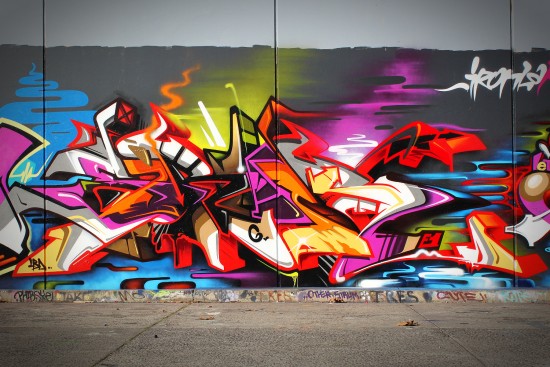
The society that yearns for ever greater control, more information awareness, and technological command, has imposed a script on the public that insists on an equation of yielding equals weakness. The inability to accept love. A suspicion of the *other*, a by product of all binary themes of competition. It is interesting to see the countless bad murals on community center walls, and the endless genius of graffiti art throughout urban centers. For art to contain life, it must reject the idea the dominant logic of the state. Transgression is the cornerstone of the discovery of eros, and Dionysis. Consensus is the Apollonian compromise. It is the flaccid dry sterility of the committee.
The politcs of production are now uniform and absolute. I think the colonizing of consciousness is almost total. In the last posting here on the blog, there was a long extended debate about for the forces of production, as well as the art market, and Pentagon, and US state department and their role in shaping taste. And it is no doubt true these financial sectors, and government agencies, played a huge role in shaping taste for forty years, or maybe in just removing taste as a consideration for appreciation. I am not sure, though, at all that such agencies can, finally, dominate the human psyche to the degree that our dream life is completely occupied. And clearly, given the protests around the planet right now, it has NOT colonized everyone totally. What I see though, as a problem, is an increasing primitivism and cynicism in aesthetic awareness. For even if social change takes place, on a material level, a world in which Speilberg is screened or Zizek lectures, or Jonathan Safron Foer is reading, is not a world free of the totalitarian structures of thought. The left must develop its sophistication in aesthetic matters — the insistence upon an instrumental and linear logic in appraising artworks, is the residue of totalitarian structures of domination.

“…of crime, serves the function of wiping away the possibility of actually re-narrating and reflecting upon, our own sense of being transgressors…”
Love this. I just watched Fast and Furious 17. I think I read that you had mentioned it in a previous post. As a soap opera for the state dept and military might.
It was obviously even worse than that. But just wanted to note:
Any scene of violence. ANY. Came from a place of torture. The only way information is given, is through immense beatings and sometimes death. It was shown as a *cleansing* for the leads. In order to pass through judgment, one must first play the role of CIA interrogator. Paul Walker breaks INTO LA county prison only to viciously beat up three latin men to “get the truth”. The violence NEVER comes from a place of DESPERATION or GUILT. Its just somehow a simple, calming passageway to freedom.
It was really depressing.
I can think of the violence in a film like Stalag 17 (not sure if you dig this one) …. William Holden has this great physical *slap* to the “bad informant” near the end. The culmination of violence is so much more suble, creepy, and yet… even more violent than Fast and Furious…
your posts are always appreciated.
J
The problem of course was that Dante is not the enemy.
Well politically…certainly Dante considered himself the enemy of Cavalcante, whom he considered an enemy, for his materialism…and Marsilio found in Dante the enemy for his hope for global Papacy, an early instance of imperial advocacy in a tradition we do deplore. In these ways Dante is certainly out enemy. In other ways too. I adore Dante but if gender is not some insuperable barrier for you to identify with human beings, Dante must be your enemy as much as he is mine (Guido, i’ vorrei che tu e Lapo ed io…).
If someone is say waterboarding you, or assisting in your torture, would you care if they were also a great poet or really talented singer? You would say yes he is burning me at the stake, or worse, burning my loved ones, iron maidening them, strappado, gassing them, but she’s not my enemy because she wrote such inventive music?
Why can’t great artists be anybody’s enemy? What about them requires virtuousness and friendliness to all? Didn’t Boulez lead cliques to go and disrupt Stravinsky performances?
Phalaris’ Bull is a figure I keep thinking of when I contemplate the art producers of exploitative class society.
http://en.wikipedia.org/wiki/Brazen_bull
I’m still reading the post though
That’s just a quick response to that issue
“n culture, the left is as distrustful of Dionysian emotion as the far right, of anything seen to be too ineffable or mysterious, because of a hard insistence on *scientific* Marxism.”
Okay so if the producers of Dionysian emotion in art are not “left”, where do you situate them?
@molly– well, thats a bit of a strawman given the context of my comment. Of course artists can be enemies. And?
@jack
thanks. I think fast & furious is a really perfect example of a certain ideology at work — on about ten different levels of expression. Its also a franchise without plot or story. It has place holders for plot, but no real plot, not in any of the installments (not that Ive actually seen all of them to be honest….but in the three or four I did see).
There’s so mluch here…but about the space
I think one of the problems of this common practise of hermeneutics and the insistence ofn”indentification” (with something in text taken as if it were not in text) is the erasure of the exterior to the spectacle as if people were not aware of the three dimensionality and the dual conditions. Spectacle is often now as you pointed out in the earlier post this kind of parade of images of things to deplore, be disgusted by and destory. But the viewer is not “identifying” with something within that display, but remains oputside and beside the dominant power that is located with the camera and creator fo the image stream. Thus CGI invites the viewer into association with the totalitarian directorproducerowner who controls everyting and presents everything dead, celebrates that everything is dead and capitalized.
people are trained from teen years to bracket off the real context when they inter^pret art, to remain silent about the consciousness the viewer/consumer has of being outside the work, spectating and consuming as others were outside designing, making and selling. We have little room now to discuss this despotic consicousness , the assistant to the owner, that cinema and television encourage regardless of what image stream is being issued. This is the effect of the medium and its form – we are allied to the owner who is showing us his property.
@molly.
yes…..I think when you say
“But the viewer is not “identifying” with something within that display, but remains oputside and beside the dominant power that is located with the camera and creator fo the image stream. Thus CGI invites the viewer into association with the totalitarian directorproducerowner who controls everyting and presents everything dead, celebrates that everything is dead and capitalized.”
this is exactly right. This is a huge observation, actually. This runs directly in the heart of the issue as it affects both criticism and the experience of culture overall. This psychic capitulation is pernicious, too. I mean, inside and outside become pretty hard to map. And what does that mean, when one does?
“One never even gets to the place where form can be discussed. It is this critical approach ”
I really dispute this. Who are these leftist critics who refuse discussion of form? I think most accept the standard stuff from Adorno and the like, the received ideas about modernism and the avant garde, and then submit those practises as understood in this way to a political analysis.
the audience now adapts its perspective to that of ‘producer’. Its shopping…..its strategies of consumption, and of display. People often …firstly…talk about marketing…..they speak from the pov of the network, of sponsors, and of executives.
But yeah – on this agree with everything you say up there,
but the inside outside – this is what i meant to say about your plays is that the communication between theml is mapped and engaged with, it is displayed and shown to operate
whereas cinema itself can’t do this even though it can send messages about wishing it coudl
where is that “identifying with the aggressor” comment from.? That strikes me as very observant. But i think we need mediologyu here – I don’t think it azpplies to most of the avant garde’s plays, not even Pirandello and Genet, but describes cinema and tv, adn then as dominant these impose certain postures on older media but not always successfully
as for accepting form…..yeah, this is difficult. I think any discussion of form is more difficult than ever, actually. And maybe in a way its impossible now, I don’t know. But i certainly dont think most critics accept adorno etc. I see little evidence of that. I do see a lot of foot noting of adorno, but I dont see much discussion that actually examines art dialectically. Im not saying there isn’t some. There is. Margaret Iverson for one.
the comments above on identification with the aggressor. Agree totally. I think I was in fact thinking mostly of film and TV there.
http://www.amazon.com/Adornos-Aesthetic-Theory-Redemption-Contemporary/dp/0262740168/ref=sr_1_3?s=books&ie=UTF8&qid=1370517825&sr=1-3&keywords=zuidervaart
“People often …firstly…talk about marketing”
yes more and more people evaluate stuff they consumer as if they were consultants meant to judge whether the stuff successfully appealed to its target audience. They distance themselves from that audience who then is aimgained naive; and these is the second loop back from political commentary. years ago it became established that poltiical commentary on conventions and speeches etc would have this insider thing plus a movie review posture. The pundits would talk not about whether a polcy was good for the commonweal (we need healthcare) but whether advancing the policy and pitching it was going to hemlp the candidate win. They all talked about whether they thought the performances woudl cvnince the rubes. It was all accepted phoniness. Now this has returned to entertainment reviewing were it originated, with this added element of the insider picked up from these newsreaders and anchors and commentators on MSNBC who subtly emphasise their rulign class status and their concern on thos grounds – can this spectacle keep the zombies out? That is now everywhere the unpoken question- whether reviewing a performance by FLOTUS or a cop show or soap.
yes ,,,, and you know there is a secondary level to that, Molly. I remember when TV began running these “behind the scenes” segments on gossip shows and the like. It had never been policy to do that, in fact it was the opposite. ANd I thought at the time…..there is a sense here of wanting to destroy the illusion. Oh, here is they shoot heads exploding….and here is how they set up car crashes…..with latex hands flying out the window. The destruction of illusion entails even more than illusion —-its a destruction of mise en scene in a sense…..and its all the easier to look upon things as a producer, and its just another competition….oh, I think the network wisely slipped this into the friday night line up. There was even the appropriating of business jargon……and then as you say, this identification with an elite class…..status, insider cool, and so it was emphasized that hipness resided in corridors of executive power.
“Spectacle is often now as you pointed out in the earlier post this kind of parade of images of things to deplore, be disgusted by and destory.”
I think this has even become the case with regards to ‘beauty’ or ‘coolness’ etc too. The celeb mags exist to invite our contempt or pity, under a cloak of ‘celebrating’ the rich & famous (but vulnerable, they must always appear fragile). The actual narratives are about this – the dead eye of the camera or recording device indulges in enjoying their torture (or cruelty) at worst or their ‘flaws’ if a more privileged ‘normal’ character. It’s far more amoral, but more directly ideological. We’re not asked adore stars anymore – it’s more to enjoy Angelina’s medical procedure, Hugh Grant’s mugshot, or hate Anne Hathaway for being thin; but at a certain remove – like we’re expected to view people around us at a certain remove as well. Of course more clear-cut demonization or hyper-sadism kicks in with the “real” other – the foreign, the poor, non-normative sexualities. So instead of the humiliating white celeb divorce, it’s the black rapper fantasizing his own violent death over and over again, or the renegade dictator being executed.
The spectacle invites a POV of indifference now – to be as detached from the subject at hand as whatever machines are used to process it. Like the ultra-efficient, android-like cops in Law & Order or CSI. Social horror just is what it is, not natural but the best make available on the market. It’s not necessarily to encourage hate – Dorner or the Boston bombers had as much ‘support’ and jokes surrounding them really, and maybe because – not despite – the MSM narrative. What matters is treating them as things, something that to be animated or erased at will, like CGI characters.
@kaspar:
Thats really interesting…..because the celebrity mag observation is right, I think. In a way its also, again, oh, lindsay lohan is puking in the gutter….and the perspective of the coverage is, ‘how will her agent repair this?’ — Can her career survive more jail time? etc. Its always flattering the reader, this shared shaming…..and while this junk always was about….oh, so and so is really a pill head…..the shift has been the vantage point is now this faux professionalized insider. THe management culture.
And its true, we arent meant to adore….we are too inside for that.
POV of indifference.
Yeah, I mostly think thats right. But i think its both that social horror is natural, AND its a competitive brand of social horror. I keep coming back to this idea of a new model for competition — its almost “honey, you want to see the amputees from the boston bombing, or dead Iraqi kids?.. Its your call tonight….”
Brand violence.
but your note on treating them as things is related…..i was trying to get to that….its connected somehow to this sense of the walking dead….the narratives have no life, they are bloodless….and into these narratives step thing-people….and then a professional judgement is made about them, thereby to provide a pseudo proof of my own existence.
here is the new yorker doing a tiny aside on what they call “photographic noir”…..now, besides the fact that most of this is very bad…..( i actually like some of what di Corcia does) it speaks to an aesthetic that is really just imitations of imitations……it is adolescent as well, and it is highly conservative as an aesthetic strategy.
http://www.newyorker.com/online/blogs/photobooth/2013/06/scenes-from-a-story-film-noir-and-photography.html#slide_ss_0=1
All of your blogposts are exactly the same.
[Thing] is popular nowadays. [Thing] was not popular in the past. [Thing]’s popularity is proof of the degradation of culture by capital and of the imbecilic infantile nature of the populace nowadays. Here are huge quotes by [famous dead person] that also say what I am saying, more or less.
You could make this reactionary by changing it to:
[Thing] is popular nowadays. [Thing] was not popular in the past. [Thing]’s popularity is proof of the degradation of culture by progressives and of the imbecilic infantile nature of the populace nowadays. Here are huge quotes by [famous dead person] that also say what I am saying, more or less.
Does this bother you at all?
I posted a comment last night responding to this post and evidently it got lost in the ether. Basically, I was suggesting that the critique of the left that you are articulating might center around our addiction to reified generalities like “capitalism” and “culture” and “the state.” The issue has to do with unity versus multiplicity – there isn’t simply one capitalism, there are an ocean of special capitalisms each one distinct and emergent, etc. This is a Deleuzian critique, obviously, and it’s hugely problematic to avoid this kind of conceptual shorthand but it’s also crucial in that reified generalities always wind up serving the cause of hierarchy and control. Part of Deleuze’s genius is how he reached back into Aristotle to problematize the general-particular rubric that continues to dominate political discourse. Aristotle (if I’m remembering this correctly) wrote that you could only philosophize about the general and the particular and that the accidental could only be written about in a poetic mode. Deleuze says, yeah, okay, but there is no general or particular – these are categories we impose on the world – there is ONLY the accidental so philosophers have no choice but to embrace that inconvenient fact. Deleuze is extending Nietzsche’s more general critique of the biggest reified generality of all – the Moby Dick of reified generalities – i.e. the idea that there is something called the Truth…and our job is to find it. This is why irony, metaphor, aphorism is so characteristic of Nietzschian thought – the whole project does, in fact, shift closer to the poetic. Another way to say this is that the work of art is not a particular dragging along with it some general truth, but rather a singularity that makes its truth claim in a strictly aesthetic mode. Inconvenient for our dogmatic projects, perhaps, but, sadly, it may be the best we can do.
I said more than this in that comment, but have to leave it here for now and hopefully this is actually somewhat germane and will make it through.
@guy:
Sorry that comment got lost. Seems to happen from time to time.
I think what is germane is the idea of a “search”. It’s really, a “solution” it seems. My memory of art classes in high school, even junior high, was that the assignment was somehow to solve this puzzle…and that the prevailing idea was always to explain what the “real” meaning of the novel was, or the painting or whatever. They didnt say “real” meaning, but thats what was meant — and obviously this is highly reductive…..and it meant that artworks were being treated like a engineering problem. How much stress can this steel beam withstand before it breaks. It is a way of removing feeling from the experience, firstly. I always thought, even as then, well, something is wrong with this…. and I think partly this has to do with (and I think this relates to what you’re saying) the idea of utility, and of extraction— and it may be that part of the function of art and culture is to break out of that dynamic —
Molly had sent me a quote from Moretti (actually a review of moretti’s new book)….
“forms are the abstract of social relationships: so, formal analysis is in its own modest way an analysis of power.”
this makes great sense to me. And I think that process, that making abstract, is where allegory resides…or where it is latent, and waiting . There is sort of no way, if we take culture seriously, not to be forced into asking such questions. And of course its not exactly a question, is it? That’s the problem. And I think that probably what is obscured in all this is that both general and particular and then accidental (if we are using those terms right now) are true.
I think its a habit of thought in the west, maybe most in the US, to form an argument where the accusation is made…”oh, you’re just generalizing”. And of course everything really is a generalization. Human thought is constantly in the process of doing that, in one way or another. So…..I am coming to believe that artworks which sustain themselves (and they do for an infinite number of reasons, really) are managing this act of destruction. There is a destruction of form — and of unity, although its more a dis-unifying somehow. And the problem for criticism is that the artwork is usually doing something else, or several other things, at the same time. And I think this is why I am trying to talk about “approach”…..which is really just which aspect of the artwork is being privileged. Sometimes two or three are……but the very act of separating the experience into categories is itself sort of reifing. And this finally returns the whole issue to language. For in all the ways language is being compromised….meaning shifting…..and its why I really think it is so hard to find a vocabulary for praise. It is so much easier to be sarcastic and snide. Its a habit of mind, now.
So there are additional questions with image. What does it mean to have a narrative, or suggest a narrative in a painting? Well, in a Delacroix its not so hard….in a DeKooning its harder…but there is still the suggestion of a figure often in dekooning…..and its one reason I think Pollock is so polorizing (there are many reasons actually) and that is that those major works, the drip works, just obliterated that dynamic. And depending on what conceit is privilged, one is going to experience that work very differently. I mean Rothko did away with it too, for example, but he replaced the figurative narration with at least borders between colors — there was a meditative quality to the color fields and they were not hidden. Pollack gives you nothing. Anyway………to get back to your points……(I think)….if we try to look at poetry or the novel say, where a narrative is constituent of the entire project…..right, thats what a novel IS….or say a play (and this is where theatre is so unique I suspect) .. but one runs into a lot of additional issues. I sort of believe that this is why now the notion of *ending* has become so significant. The end…an *end* implies this re-start…a repetition….you complete the reading….but nothing can really end, so you start again. This is the obsessive.repetitive compulsion of cheap detective novels, for example. Or Harlequin romances……there is a reflex attached to the completion. In theatre…..as I suspect you know very welll……the way the ending happens is quite different. Maybe this has to do with nothing more than the fact that live actors are peforming….the whole notion of time changes….an audience is aware I think of the time of the actors (I think Blau wrote about this, in fact). So there is even one MORE element that occurs in theatre (usually). The bad sort of institutional theatre one finds today in the US is, partly, ABOUT faking this instability….pretending this is *not* the case.
This is a huge topic. And Im rambling. But there is something germane in what you say about the accidental….certainly in theatre. There is in this search, the wrong search, the hierarchical search ….and its spatial, obviously, too. We invent and impose a map….top to bottom.
@wrooines:
I think that the troll tone….its like the intellectual version of acid reflux. And sarcasm…but I would ask if you have read all the blog posts….that would imply a lot of reading….and one wonders why you didn’t stop far earlier.